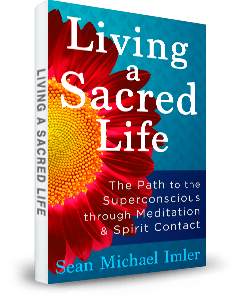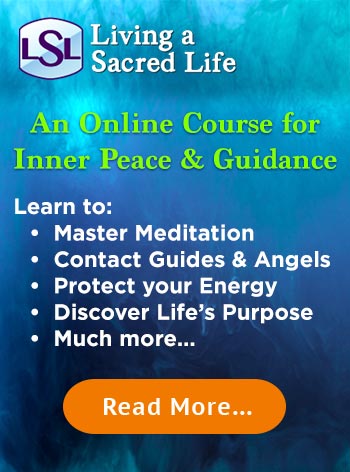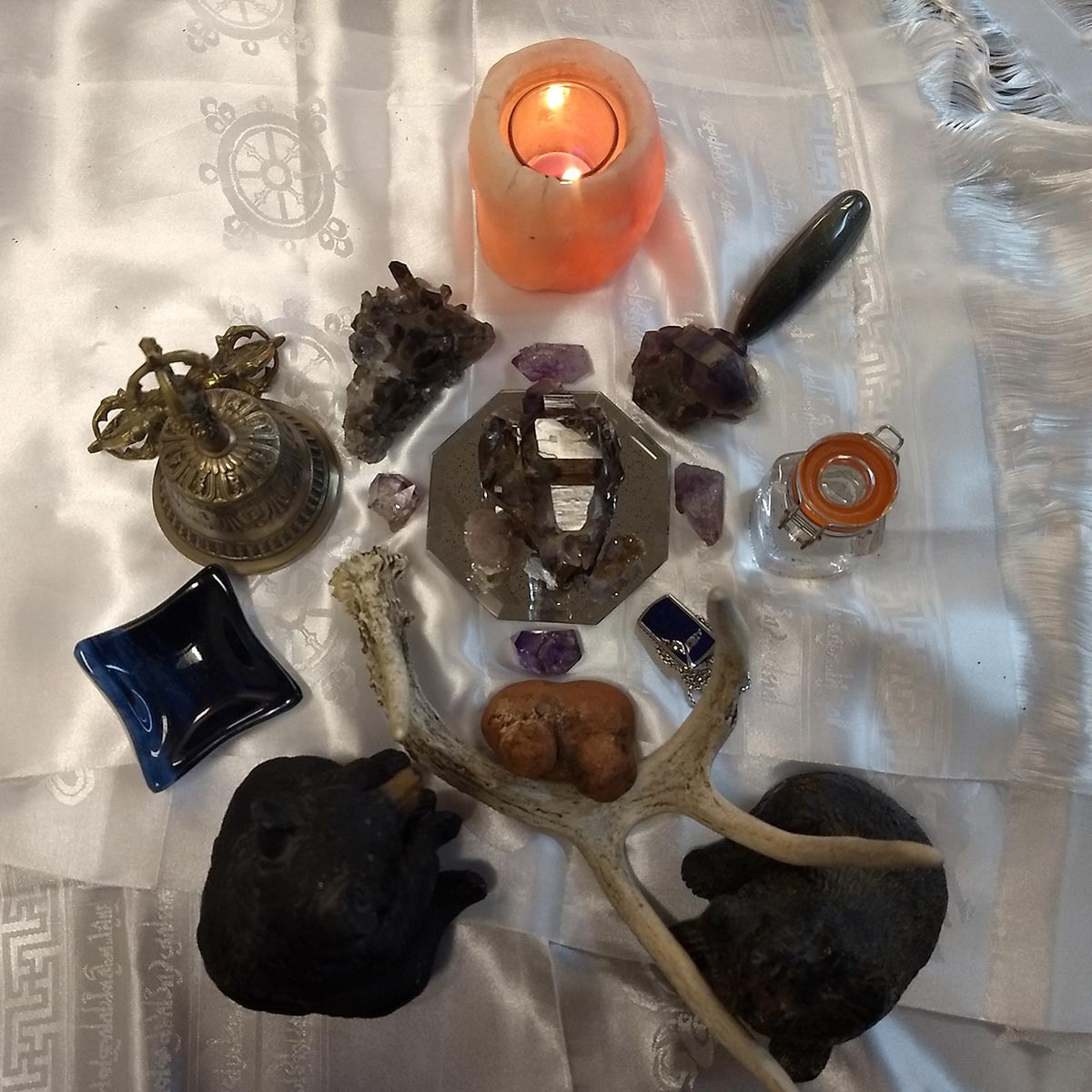As we embark on the journey of understanding the mind, it becomes crucial to differentiate between the four consciouses: conscious, subconscious, unconscious, and superconscious. Comprehending the distinctions not only enriches our knowledge but also opens new dimensions for personal development.
With this understanding, we can tap into the power of our minds at various levels, helping us to unlock our full potential. So, let’s dive in together to explore these four fascinating aspects of our mind, each holding unique significance in our life journey.
Contents
Understanding the Consciouses
Delving deeper into the concept of consciousness, we need to understand that it is generally divided into four levels – the conscious, the subconscious, the unconscious, and the superconscious. Each of these levels carries its own unique attributes, functions and influences on our behaviour, thoughts, and overall personal development. Let’s unravel these, one at a time.
The Conscious Mind
The conscious mind, in both academic and non-academic perspectives, functions as the gatekeeper of our thoughts, actions, and emotions. It’s the part of our mind that is fully aware and in control of our current thoughts and actions. When you are reading this article, making sense of the words, and understanding the content – you are using your conscious mind. It’s the level of consciousness responsible for our direct interaction with the world around us.
The Subconscious Mind
Moving into deeper territories, we encounter the subconscious mind. This rung of consciousness is not always in our direct control but influences our actions and emotional responses significantly. Depending on who you read, psychologists claim the the subconscious mind controls 90% or more of our experience and processing of reality. It’s like a storage unit, holding all your past experiences, your beliefs, your memories, and your skills. It’s the part of your mind that keeps your heart beating, your lungs breathing, and your body functioning without your direct conscious effort. This is a perfect example of its effectiveness. It’s already controlling your breathing as you read this.
The Unconscious Mind
The unconscious mind is a step deeper into the subconscious, often referred to as a reservoir of feelings, thoughts, urges, and memories that are outside of our conscious awareness. In academic terms, psychologists like Sigmund Freud and Carl Jung believe that many of our behaviours and preferences are driven by this level of consciousness. The unconscious mind holds the experiences and memories that have been repressed or forgotten, yet still influence our behavior dramatically. It is an aspect of ourselves that we often deny or neglect, yet it plays a crucial role in shaping our lives.
The Superconscious Mind
The superconscious mind, while not formally recognized in traditional psychology, is a popular concept in various spiritual, metaphysical and personal growth teachings. It is often referred to as the higher consciousness, the universal consciousness, or the divine mind. It is believed to hold immense wisdom, intuition, and creative inspiration and is considered the source of love, truth, and enlightenment. In simple terms, it’s the level of consciousness that transcends our individual self and connects us to a greater cosmic wisdom. It’s the realm where the conscious, the subconscious, and the unconscious minds merge into the totality of experience, where all the wisdom of the universe resides.
Each level of consciousness plays a unique role in our lives. From our day-to-day interactions with the world (conscious mind), to our automatic responses and habits (subconscious mind), to our deeply ingrained and often unexplored drives (unconscious mind), and finally to our potential connection with something larger than ourselves (superconscious mind), we are complex beings, navigating through different levels of consciousness. Understanding these levels can provide us with a better understanding of ourselves and our connections with the world around us.
The Hidden Mind: The Subconscious Defined
In our exploration of the human mind, we now turn our lens towards the subconscious. This term, often bandied about in both academic and non-academic circles, refers to the segment of our mind that operates below the surface of our conscious awareness. It’s a repository of sorts, a vast storage room of memories, feelings, and experiences that may not be immediately accessible or apparent to our conscious mind.
From an academic perspective, the subconscious mind is defined as a level of consciousness wherein resides information that is not readily available to the conscious mind (the level you’re aware of right now as you read, absorb, and evaluate this information). Think of it like a massive iceberg: what you can see (the conscious mind) is dwarfed by what lies beneath (the subconscious).
Carl Jung, the eminent Swiss psychiatrist, aptly referred to the subconscious as “the shadow”, a nod towards its elusive, often enigmatic nature.
While the subconscious mind may often be linked with forgotten trauma or suppressed memories, it’s important to remember that it serves a myriad of functions. It’s involved in everything from the formation of our habits and preferences to the regulation of our bodily processes. Moreover, it’s a critical player in our learning processes and has the capacity to process information and solve problems at a speed and complexity that can leave our conscious mind in the dust.
On the other hand, in non-academic circles, particularly within spiritual or metaphysical contexts, the subconscious mind is often regarded as a gateway to the higher self or the spiritual realm. Some spiritualists argue that the subconscious mind is an intermediary between the conscious and the superconscious, a bridge that connects us to universal wisdom and truth. We might, through certain practices such as meditation or hypnosis, tap into this reservoir of knowledge and guidance.
Understanding the Subconscious: Key Points
- The subconscious is like a vast storage room of memories, feelings, and experiences that may not be immediately available to the conscious mind.
- In academic circles, it’s seen as a crucial part of our cognitive machinery, playing a key role in learning, problem-solving, and bodily regulation.
- From a spiritual perspective, the subconscious is often portrayed as a gateway to the higher self or the spiritual realm.
The subconscious mind is undoubtedly a powerful, complex aspect of who we are. Whether we approach it from an academic or spiritual perspective, one thing is clear: there is much more going on beneath the surface of our minds than we consciously realize. As we explore further into the realms of the unconscious and the superconscious, we will continue to unravel the intricate tapestry of the human mind.
The Unconscious Mind: What It Is and How It Works
Delving into the realm of the unconscious mind is like embarking on a journey into the deep, dark recesses of an uncharted cave. It’s a place where our suppressed feelings, unprocessed thoughts, and forgotten experiences reside. From an academic perspective, the unconscious mind is often referred to as a storage facility of sorts. It’s a repository for the thoughts, feelings, and experiences that we are not consciously aware of at any given moment.
Freud, the father of psychoanalysis, perceived the unconscious mind as a reservoir of feelings, thoughts, urges, and memories that are outside of our conscious awareness. His theory suggests that most of our behavior is influenced by these unconscious thoughts that we are oblivious to. They are a result of our experiences, especially those that occur in our childhood. Freud’s theory still holds significant influence in the realms of psychology and psychiatry, despite its debated validity.
The Manifestations of the Unconscious Mind
Intriguingly, the unconscious mind isn’t entirely inaccessible; it often reveals itself in subtle ways. Dreams, for instance, are considered a window into our unconscious. They represent a compilation of our suppressed desires and unprocessed emotions. Freud even suggested that slips of the tongue (often referred to as Freudian slips) are a peek into our unconscious mind, revealing thoughts and desires we might not even be aware that we harbor.
Similarly, automatic behaviors and habits are also manifestations of the unconscious mind. Have you ever driven home from work and realized you don’t remember the drive? That’s your unconscious mind at work, taking over tasks that have become so routine, they don’t require conscious thought.
“The unconscious mind serves as a repository, a ‘cauldron’ of primitive wishes and impulse kept at bay and mediated by the preconscious area.”
~Sigmund Freud
Unconscious Mind: A Non-Academic Perspective
Moving beyond the academic sphere, the unconscious mind also holds a prominent place in non-academic and spiritual discussions. Some spiritual teachings suggest that the unconscious mind is the source of our creative abilities and intuition. It’s a realm where our higher self communicates with us through symbols, dreams, and intuitive hunches. By tapping into our unconscious mind, we can gain access to insights, creative solutions, and higher wisdom that aren’t readily available to our conscious mind.
The unconscious mind, in spiritual parlance, is often seen as a wellspring of potential. It is the fertile ground where seeds of thoughts and desires are planted, and with nurturing attention, these can be brought to conscious awareness and manifest in our reality.
Whether we look at the unconscious mind from an academic or non-academic viewpoint, one thing is clear: it holds immense power and influence over our thoughts, behaviors, and life experiences. Understanding and harnessing this power can lead to profound transformations, both at the psychological and spiritual levels.
The Superconscious: Unlocking Your Higher Self
As we delve deeper into the crevices of our minds, we arrive at a space known as the superconscious. The superconscious mind, a less explored but equally fascinating realm of mental activity, is a concept that often transcends the boundaries of conventional psychology. It’s considered by some to be a higher state of awareness, where wisdom, spiritual insights, and creative ideas reside. It’s the part of our mind that connects us with a greater consciousness (often referred to as the universal, collective, or divine consciousness).
From an academic perspective, the superconscious mind is a relatively controversial topic. While mainstream psychology doesn’t formally recognize the superconscious, certain branches of psychoanalysis, such as Carl Jung’s collective unconscious theory, hint towards a similar concept. Jung proposed the idea of a shared pool of knowledge and experiences among all humans, a reservoir of collective wisdom that one could tap into. This bears a keen resemblance to the idea of the superconscious, even if Jung himself didn’t explicitly use this term.
“Who looks outside, dreams; who looks inside, awakes.”
~Carl Jung
Now, let’s turn our attention to the non-academic perspective. Within spiritual and metaphysical communities, the superconscious is often described as the source of intuition and divine guidance. Proponents suggest that this higher level of consciousness can provide profound insights and solutions that our conscious and subconscious minds cannot. They believe that by tapping into our superconscious, we can access wisdom far beyond our personal experiences and knowledge.
There are several ways to access the superconscious mind, according to spiritual practitioners. Some of these include deep meditation, hypnosis, or dream analysis. All these methods involve quieting the conscious mind, allowing the superconscious to come forth. Harnessing the power of the superconscious, they argue, can lead to personal growth, heightened creativity, and spiritual enlightenment.
Superconscious: A Bridge Between Worlds
In essence, the superconscious mind is thought to serve as a bridge between our individual consciousness and the collective consciousness of the universe. It’s a place where our personal reality meets the ultimate reality, where the finite encounters the infinite. As such, it’s considered the source of our most profound insights, spiritual awakenings, and creative epiphanies. Whether or not such a realm exists within our minds is a matter of personal belief, but its potential implications are truly fascinating.
The superconscious mind is a multifaceted concept, viewed through different lenses within academic and non-academic circles. Its existence is debated among psychologists, yet embraced by spiritual practitioners. It’s a concept that encourages us to look beyond the confines of our personal experiences and connect with a greater, universal reality. Whether the superconscious is an actual realm within our minds, or a metaphorical construct, it invites us to explore the depths of our minds and the mysteries of the universe.
Quantum Healing Hypnosis Technique (QHHT) is the Past Life Regression method developed by Dolores Cannon. When conducting sessions, a small group of her clients would access vital information about extra-terrestrials and a more comprehensive view of the human species, their origins, and their history on Earth. This impersonal and more global aspect she often referred to as the Superconscious.
How to Access the Superconscious
Before delving into the intricacies of accessing the superconscious, let me first assert that this is a process that requires patience, discipline, and a certain degree of openness. The superconscious is, in essence, a higher state of consciousness that transcends the limitations of the physical plane and taps into the universal consciousness or divine intelligence. It’s an arena of infinite possibilities, infinite wisdom, and infinite creativity that is always available to us, albeit not always accessible due to our own mental and emotional barriers.
Superconscious Access
So, how do we access the superconscious? Well, here are some methods that have proven effective both in my personal journey and in the experiences of countless individuals I have had the privilege to guide.
- Meditation: This is perhaps the most common method used to access the superconscious. The practice of quieting the mind (through focusing on breath, a mantra, or simply observing thoughts as they arise and pass) paves the way for the superconscious to express itself. It’s like tuning into a higher frequency of thought, one that is not bound by the confines of the individual ego or limited by the constraints of linear time and space.
- Contemplative Practices: These include practices like prayer, introspection, and contemplation on higher truths or principles. Such practices can create a mental environment conducive to the emergence of superconscious insights.
- Expressive Arts: Artistic activities like painting, writing, dancing, and music can act as portals to the superconscious. Often, artists report entering a state of ‘flow’ where they lose track of time and their creations seem to ‘flow’ through them rather than being the result of conscious effort.
- Dream work: Dreams can be a gateway to the superconscious. Keeping a dream journal and engaging in dream interpretation can provide valuable insights into the workings of the superconscious mind.
- Shamanism: The use of entheogens or the trance induced by the repetitive drum or rattle, along with the intent of connecting with your spirit guides and/or higher self is the perfect method for accessing the superconscious mind.
- Mindfulness: Quieting the mind during everyday tasks allows the superconscious mind to hold more prevalence in your everyday waking state. It’s the brain’s constant dwelling on the past and future that inhibit a person to experience the fulness of ‘now’ where the superconscious holds residence.
No Coercion
While the above methods can be effective, it’s important to remember that the superconscious cannot be forced or coerced into revealing itself. It tends to express itself spontaneously when we’re receptive and ready. It’s like a shy friend who shows up unexpectedly, but always at the perfect time.
“The superconscious mind manifests itself in moments of inspiration, intuitive thought, insight, creative ideas, guidance, and even in the solving of problems. It is the source of visions, dreams, and the repository of all wisdom, knowledge, and power. It is the wellspring of all creativity.”
~Joseph Murphy, renowned New Thought Minister
Indeed, accessing the superconscious is more about alignment and attunement than about effort or control. It’s about creating the right conditions for the superconscious to reveal itself and then learning to trust and act upon the insights and inspirations that emerge.
And remember, as with any journey of personal growth and exploration, patience is key. So give yourself the grace and time to grow, to learn, and to experience. The superconscious is always there, waiting to be accessed. It’s just a matter of tuning in.
The Spiritual Aspect of Consciousness
From a spiritual perspective, consciousness is not merely the realm of the physical brain, but a vast, cosmic entity. It is a profound substrate that underlies all existence and forms the essence of our very being. Here, we delve into the four different aspects of consciousness: conscious, subconscious, unconscious, and superconscious.
To define Spiritual, I highly recommend reading “What Does it Mean to Be Spiritual?“
The Conscious Mind
The conscious mind, in spiritual terms, is more than just the surface-level awareness of our thoughts and actions. It’s the part of our consciousness that interacts directly with the physical world, making decisions and processing information from our senses. It is a powerful tool for navigating the world around us, but it is merely the tip of the iceberg. From a spiritual perspective, the conscious mind is a lens through which the soul experiences the physical world, a temporary construct shaped by our individual experiences and beliefs.
The Subconscious Mind
Delving deeper, the subconscious mind houses a wealth of information that isn’t immediately accessible to our conscious awareness. It’s the realm of dreams, intuition, and hidden memories. It’s where feelings and impressions linger, often influencing our conscious mind in ways we don’t readily understand, creating emotional responses and habits. Spiritually, the subconscious is thought of as the repository of our past experiences, a wellspring of wisdom and learning where our soul’s lessons are stored.
The Unconscious Mind
The unconscious mind is a concept that straddles both spiritual and psychological realms. It’s seen as a vast, dark ocean where our deepest fears and desires reside. It’s the part of us that holds onto traumas and wounds that we’re not ready to face. Yet, from a spiritual viewpoint, the unconscious also holds the potential for profound healing and transformation. It’s the place where we can confront and integrate our shadows, leading to a deeper understanding of our true nature.
The Superconscious Mind
Finally, the superconscious mind, a concept that is primarily spiritual in nature, refers to a level of consciousness that transcends the individual self. It’s seen as the ultimate source of wisdom, creativity, and divine love – the wellspring from which all things arise. It’s the realm of collective consciousness, where we are connected with everything in the universe. It is in the superconscious that we find the deepest sense of peace and unity, a state of being that is often described as enlightenment or oneness with the divine.
In the spiritual understanding of consciousness, these different aspects are not isolated compartments but interconnected layers of a greater whole. The journey of spiritual growth is often described as a process of moving inward, from the surface level of the conscious mind, through the subconscious and unconscious, and finally into the radiant heart of the superconscious. This journey is not about discarding or transcending the lower aspects of consciousness but integrating them into a unified sense of self.
The Relationship Between Consciousness and the Brain
Let’s dive a little deeper and look at one of the most complex relationships in psychology and neuroscience – the relationship between consciousness and the brain. From an academic perspective, consciousness is often referred to as our subjective experience of the world, our thoughts, and our feelings. It is the state of being aware and able to think and perceive, having a sense of self. The brain, on the other hand, is a tangible organ, an intricate network of neurons that dictates every single action, reaction, thought, and emotion that we have.
The Academic Perspective
From a scientific standpoint, consciousness and the brain are intimately connected. Our conscious experiences are generated by the brain, specifically the cerebral cortex (the part of the brain responsible for cognitive processes like thinking, perceiving, and understanding language). The brain structures and their functioning are what give rise to our conscious experiences. Hence, any changes or abnormalities in the brain can significantly impact our consciousness. For example, damage to specific parts of the brain can lead to disorders of consciousness like coma or vegetative state.
The Non-Academic Perspective
From a non-academic or more spiritual perspective, the relationship between consciousness and the brain is seen differently. Consciousness is often thought of as a non-physical entity, something that exists beyond the physical brain. It’s considered to be more like an energy or a force that can exist outside the physical body. In this perspective, the brain is not the producer of consciousness, but merely a vessel or tool that consciousness uses to interact with the physical world.
The Intersection of Consciousness and Spirituality
There’s a fascinating intersection between the realms of science and spirituality, specifically when we delve into the concepts of consciousness. While academic psychology and neuroscience have their interpretations, spiritual traditions around the world perceive these states of consciousness differently. The four primary states – conscious, subconscious, unconscious, and superconscious – serve as the foundation for our understanding of the human mind, yet their spiritual implications are equally profound.
Read “Consciousness From the Grand Scientific Perspective.”
Consciousness in Psychology and Neuroscience
On an academic level, ‘consciousness’ primarily refers to our current awareness or thoughts, feelings, and perceptions that are occurring in the ‘here and now’. This is the realm of the ‘conscious’. The ‘subconscious’ (or ‘preconscious’, in Freudian terms) is a layer below, holding information that’s not currently in our awareness but can be accessed with relative ease. Deeper still lies the ‘unconscious’—a reservoir of feelings, thoughts, urges, and memories that are outside of our conscious awareness. Neuroscience has added complexity to these ideas, suggesting that our brains process a vast amount of information unconsciously before it enters our conscious awareness.
Consciousness in Spiritual Traditions
In many spiritual traditions, ‘consciousness’ transcends individual awareness. The ‘conscious’ is still seen as our current state of awareness, but with the added caveat that it’s often clouded by ego and worldly distractions. The ‘subconscious’ is perceived as a repository of past experiences and potential wisdom, while the ‘unconscious’ is often associated with collective archetypes and deep-rooted patterns of behavior.
Then, there’s the ‘superconscious’—a term absent from traditional academic discourse. In spiritual contexts, the superconscious is often equated with a higher state of awareness, intuition, or the ‘Higher Self’. It’s believed to be a state of consciousness that transcends the limitations of the individual mind, providing a link to universal wisdom or the divine.
Spirituality, in essence, is the exploration and realization of the layers of consciousness beyond the immediate ‘conscious’ state, culminating in the attainment of the ‘superconscious’.
Integrating the Two Perspectives
Blending the academic and spiritual perspectives can yield a holistic understanding of consciousness. The ‘conscious’ serves as our immediate interface with the world, while the ‘subconscious’ and ‘unconscious’ underpin our personality and behavior (often in ways we’re not immediately aware of). Meanwhile, the ‘superconscious’—be it a neuroscience-backed intuition or a spiritual inner wisdom—can guide us towards greater understanding and personal growth.
Despite the differences in terminology and interpretation, both perspectives underscore the vast, largely untapped potential of the human mind. Whether we explore these states through meditation or psychotherapy, the goal remains the same: to bring the hidden realms of our consciousness into the light of awareness, freeing us from unhelpful patterns and enabling us to live more fully and authentically.
In Conclusion
If you’d like a more in-depth discussion of how we actually experience consciousness on a personal level, read “The Exquisite Truth: Consciousness Is Not Perception Or Awareness.”
You may also like to read, “You Need to Know Consciousness from Spirit to Science.”
I also highly recommend reading, “Consciousness From the Grand Scientific Perspective.”











